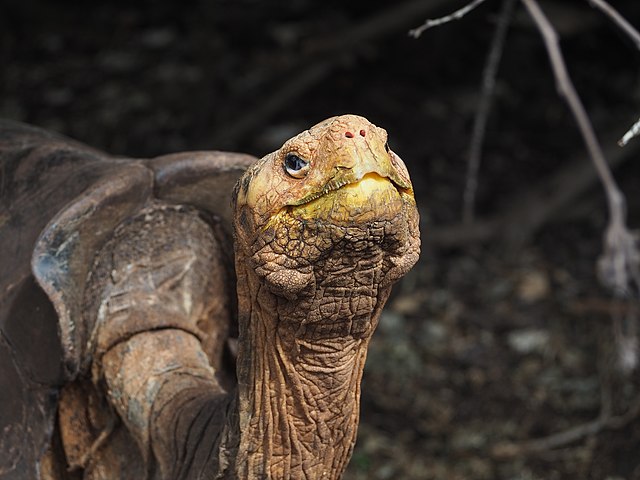 Good news for the iconic Galápagos tortoise and the Florida Panther! These two species which were thought to be on the verge of extinction are slowly making a comeback!
Good news for the iconic Galápagos tortoise and the Florida Panther! These two species which were thought to be on the verge of extinction are slowly making a comeback!
On May 25, Ecuador’s Galápagos National Park announced the discovery of a female Chelonoidis phantasticus, a giant sub-species thought to be extinct for over a century. Meanwhile, Florida state’s majestic, but endangered panthers are seeing steady population growth.
Let's look at what led to the species going extinct.
The Giant Tortoise of the Galapagos Islands
The Galápagos Islands, located just off the coast of Ecuador, make up a lush archipelago bustling with unique biodiversity. You are likely to see blue-footed boobies and pink iguanas -- but the Galápagos Islands are best known for their enormous namesake tortoises.
 The world’s largest, Galápagos tortoises are peaceful creatures that can grow up to 5 feet in length and weigh up to 550 pounds. The tortoises munch on grass, leaves, and cactus, and clock in a whopping 16 hours of sleep daily. Their ability to store water internally means they can survive up to a year without eating or drinking. Galápagos tortoises also enjoy staggering longevity – the oldest lived to the age of 152!
The world’s largest, Galápagos tortoises are peaceful creatures that can grow up to 5 feet in length and weigh up to 550 pounds. The tortoises munch on grass, leaves, and cactus, and clock in a whopping 16 hours of sleep daily. Their ability to store water internally means they can survive up to a year without eating or drinking. Galápagos tortoises also enjoy staggering longevity – the oldest lived to the age of 152!
When Spanish sailors first discovered the archipelago in 1535, they dubbed the islands after galápago, the Spanish word for “tortoise.” And nearly 200 years ago, British naturalist Charles Darwin marveled at the gargantuan tortoises and even attempted to ride them. However, even in Darwin’s day, the population numbers of the tortoises were dwindling. Beginning in the 1600s, an estimated 100,000 tortoises were hunted and killed, and feral animals persist as threats to their eggs and food supply. Today, about 10 species of Galápagos tortoise survive on the islands.
Yet, the recent discovery on Fernandina Island points to hope for the Galápagos tortoise. A team of scientists from Yale University had first found the female tortoise during a 2019 expedition to the island. Following extensive genetic studies that compared the live tortoise to a specimen from 1906, the scientists confirmed that the tortoise was a relative to Lonesome George, who died in 2012 and was thought to be the last of his kind.
The team also studied 11 male and 18 female tortoises, which were discovered to be partially related. These tortoises, and the findings of poop and prints, suggest that more are living happily on the island. The Galápagos National Park is currently preparing another expedition to locate more tortoises.
The Elusive Panthers of Florida State
 The majestic, yet elusive panther is the state animal of Florida and the mascot of many a high school. These large, carnivorous cats inhabit prairie grasslands, marshy swamps, and dense forests, and prey on white-tailed deer, wild hogs, rabbits, raccoons, and armadillos.
The majestic, yet elusive panther is the state animal of Florida and the mascot of many a high school. These large, carnivorous cats inhabit prairie grasslands, marshy swamps, and dense forests, and prey on white-tailed deer, wild hogs, rabbits, raccoons, and armadillos.
The Florida panther has long been recognized as an endangered species and was one of the first animals to be listed under the 1973 Endangered Species Act. Male panthers claim territories of over 200-250 square miles. However, as cities have continued to expand, humans are encroaching into the cats' habitats.
Florida panthers are especially vulnerable to mercury pollution and diseases like feline leukemia. Many of these animals have been struck by vehicles while crossing roads and highways. In this year alone, 14 panthers were killed. Panthers have also resorted to preying on unguarded livestock and pets, making it hard to pass legislation to protect these animals.
In the past decades, however, panther populations have seen a significant rebound. Conservation programs have succeeded in raising the wild population from an estimated 12-20 adults in 1967 to over 200 in 2010. A female panther was seen north of Caloosahatchee River for the first time in 43 years, and a unanimous law expanding panther land protections was recently passed in Florida.
Both these studies show that with a little help from humans, animal species can indeed recover and flourish.
Sources: NPR, Guardian, BBC, CNN, Reuters








